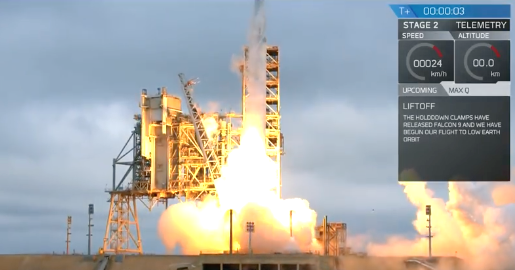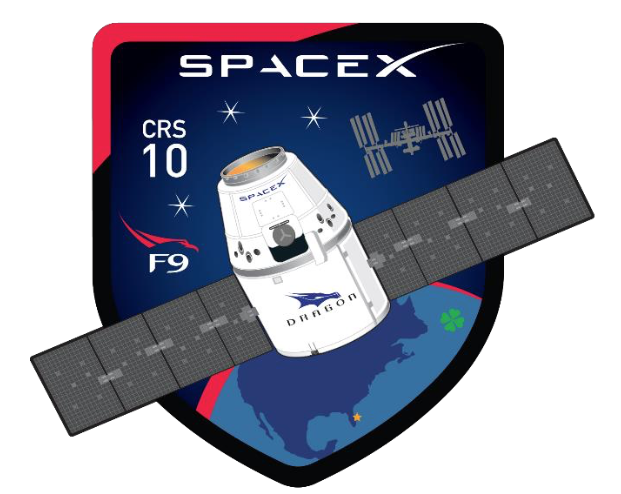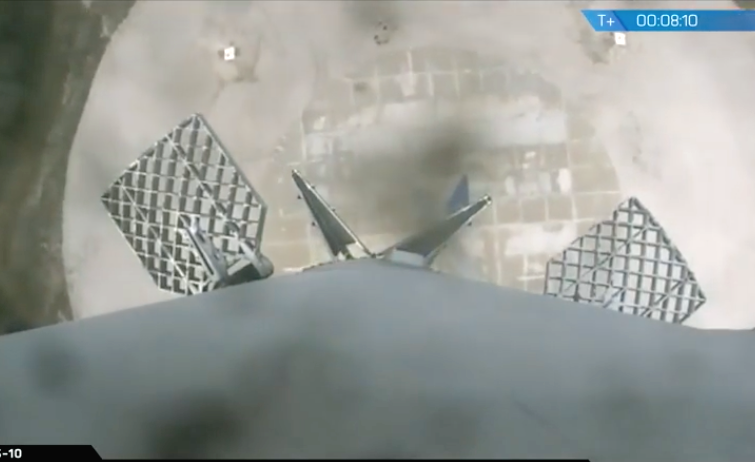

Official SpaceX CRS-10 mission patch
Today's launch was successful in both the upward launch and in the downward direction as well as the Falcon 9's first stage came back to Earth landing a few miles from the Florida launch site about eight minutes after liftoff as planned. It was SpaceX's first daytime landing at the site, called Landing Zone 1, at the Cape Canaveral Air Force Station.
"Baby came back," Space CEO Elon Musk wrote on Instagram after the successful landing. The Falcon 9's first and second stages separated about 2.5 minutes into today's launch. As the first stage flew back for its touchdown, a secondary mission objective, the second stage continued to power Dragon to orbit. The capsule got there safely and, about 11 minutes after liftoff, successfully deployed its solar arrays and began its two-day journey to the station.

What goes up hopefully comes down, and this one did. "Baby came back," Space CEO Elon Musk wrote on Instagram after the successful landing.
When the Dragon arrives at the ISS French astronaut Thomas Pesquet will grapple the spacecraft using the 57.7-foot (17.6- meter) Canadarm2 to reach out and capture the Dragon spacecraft and attach it to the station.
There are more than 5,000 pounds of supplies and payloads, including critical materials to directly support dozens of the more than 250 science and research investigations that will occur during Expeditions 50 and 51 inside the Dragon. Among the investigations are experiments with potential to help fight human disease, monitor climate data, and improve autonomous spacecraft docking with the orbiting laboratory.
SpaceX CRS-10 is the tenth of up to 20 missions to the International Space Station that SpaceX will fly for NASA under the first CRS contract. In January 2016, NASA announced that SpaceX’s Falcon 9 launch vehicle and Dragon spacecraft were selected to resupply the space station through 2024 as part of the second Commercial Resupply Services contract award. Under the CRS contracts, SpaceX has restored an American capability to deliver and return significant amounts of cargo, including live plants and animals, to and from the orbiting laboratory. A variant of the Dragon spacecraft, called Crew Dragon, is being developed for US- based crew transport to and from the station.
Dragon's return to Earth will be after an approximately one month stay at the orbiting laboratory. About five hours after Dragon leaves the station, it will conduct its deorbit burn, which lasts up to 10 minutes. It takes about 30 minutes for Dragon to reenter the Earth’s atmosphere and splash down in the Pacific Ocean off the coast of Baja California.

